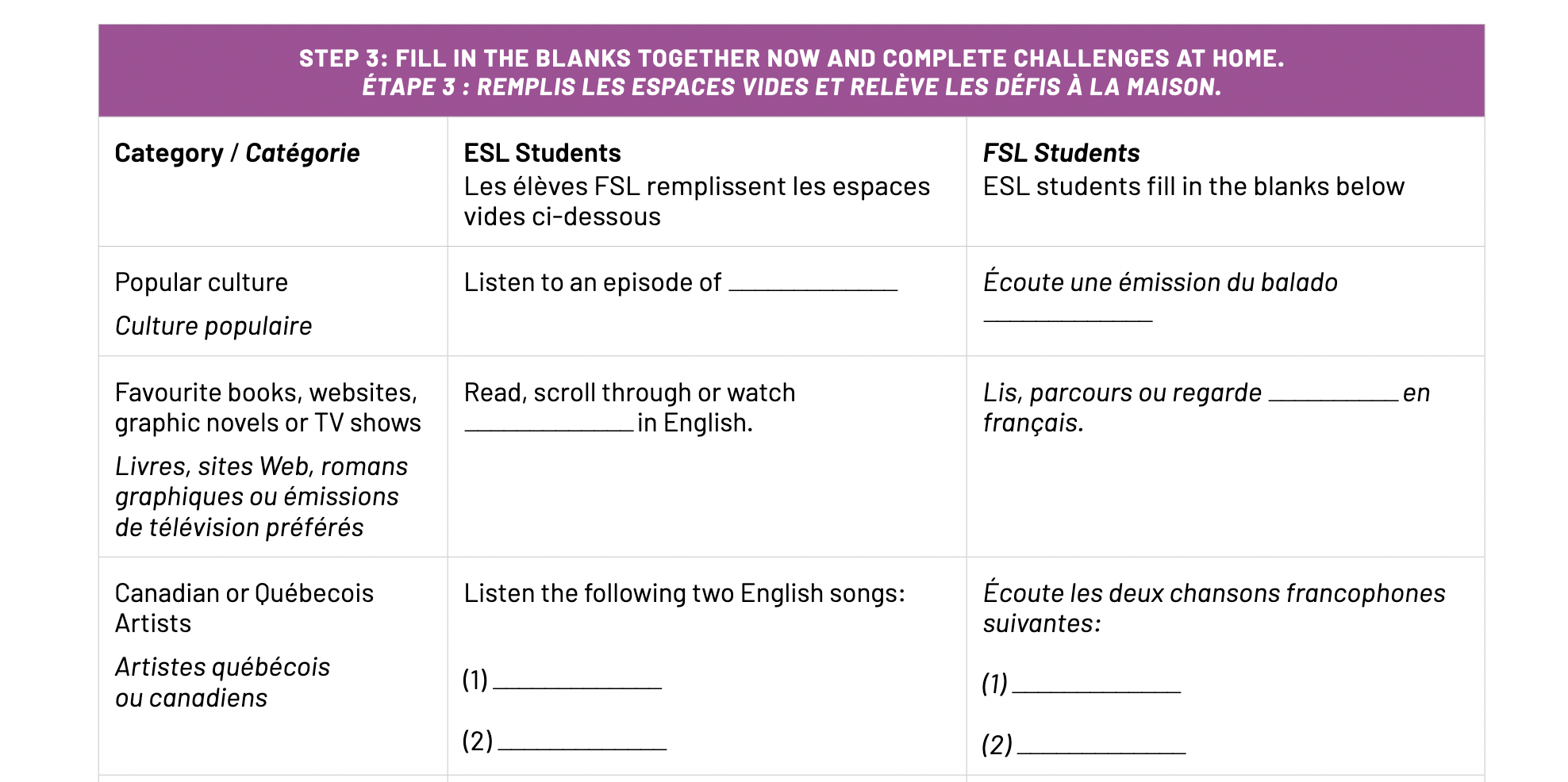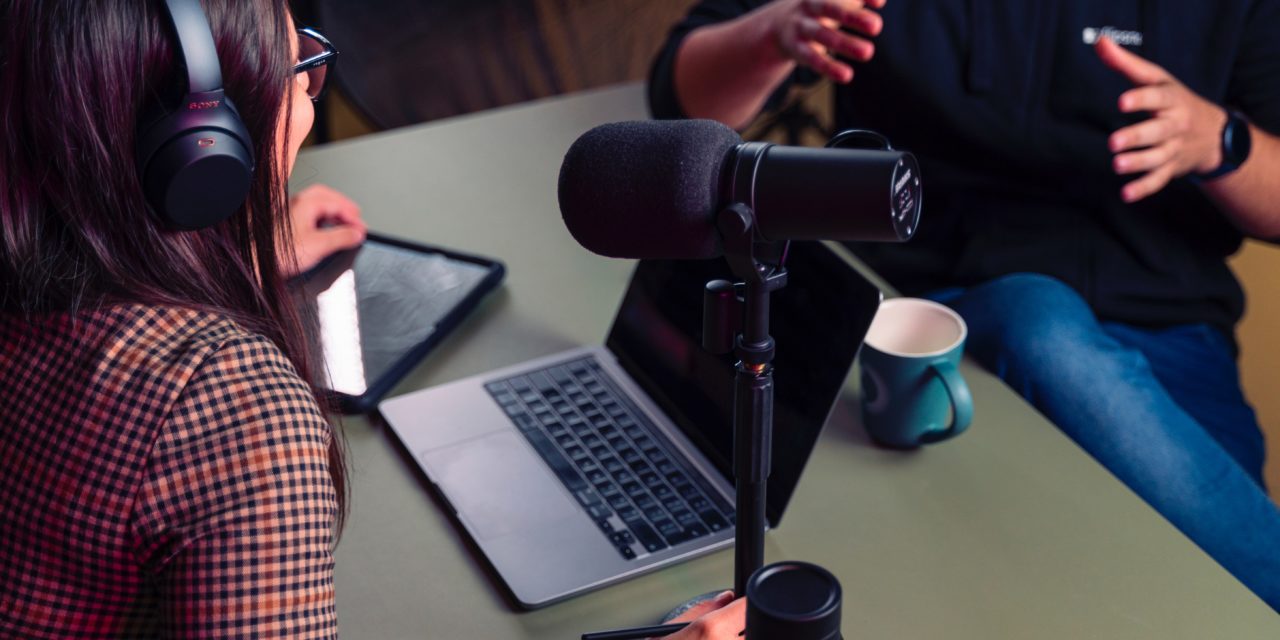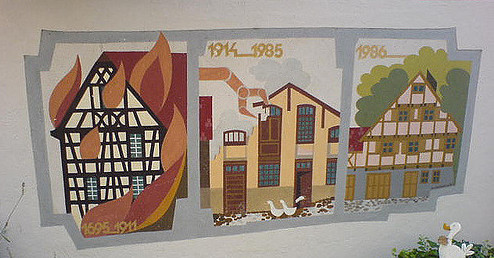This is the third in a series of blog posts that focus on using podcasting as a pedagogical strategy to focus on digital competency and subject-specific and cross-curricular competencies. Including resources available to support teachers like Baladoweb.
Over the last few years, I’ve been dabbling with something I call The Bloomer Report to have a sense of the work necessary to produce a podcast. I do not take lightly the caution to “start small”.
Technology now includes impressive tools to record and edit, as well as a greater opportunity to share the finished product with authentic audiences. These tools connect well with the English Language Arts production process as outlined in a recent LEARN blog post about the Power of Podcasting.

I think a podcast where youth produce the episodes is a great choice for some students to demonstrate their competency in different areas. I use the word ‘some’, because it may not be for everyone. I’ve recently been re-inspired by choice boards. As my colleagues Chris Colley and Carolyn Buteau describe it, choice boards allow multiple points of entry as well as output of demonstrating learning. They also describe the Universal Design for Learning (UDL) principles of low floor and high ceiling (and wide walls). Meaning it can be accessible for all students and with tailored scaffolding, no limit to how far a student may want to go. This strategy is a chance to give students a chance to dip a toe into podcasting through choices like writing show notes, being involved in the production side, pitching a theme or being the voice behind the microphone.
But this blog post is actually about podcasting and how last year as part of LEARN’s I Belong project, we organized a pilot called Podcasting – Tell a Story. The idea was to bring together an English School and a French School to have students co-create a podcast with the support of a sound artist.
The I Belong project was developed with the support of the Secrétariat aux relations avec les Québécois d’expression anglaise (SQREA) as a way for English-speaking youth to engage with issues of identity and explore their sense of belonging in Quebec.
We were moved by research that came out in a 2019 consultation with the English Speaking Community entitled Building Bridges. Two aspects stood out for us. First, participants expressed that a “lack of vocabulary, ease with the language and comfort speaking a second language were identified as barriers” to feeling wholly part of Quebec society. If that statement gives you pause, know that we interpret this as requiring more opportunities to build confidence to communicate in French.
In a section called, The relationship with the Francophone majority is complex, the consultation report spoke about “a deeper and more emotional discussion about feeling not welcomed, not understood, believing they are being seen as ‘the enemy’ and the feeling of having the contributions of the English-speaking communities, historic and present-day, rejected or minimized”. There was concern expressed “about youth continuing to leave Québec to find jobs elsewhere and suggested that a low sense of belonging may have contributed to that trend”.
As a specific response, LEARN was inspired by resources designed to support linguistic risk-taking. A linguistic risk is an authentic, everyday communication task that some language learners may shy away from and may need special encouragement to engage in.
We wondered, what might it look (and sound like) if we had students from English schools and French schools speak to each other in their second language. To talk about themselves and what they find interesting and like to do.
A Teacher Guide was created to provide an overview of the project and prepared the students to reflect on and discuss their own sense of identity and belonging in Quebec. These identities may include languages spoken, but also include the multiplicity of other things that make us who we are including background, hobbies and passions.
For the podcast project, students from the different schools met each other online with the support of Guillaume Jabbour, musician and sound artist who works closely with the English Language Arts Network (ELAN).
The project took place in the context of the COVID 19 pandemic, so the meetings took place over Zoom. When the times were scheduled, the students engaged in a few icebreakers to know a bit about each other and were introduced to the steps that go into making a podcast.
This meeting included the students taking turns talking to each other in English and in French using the questions and directions found in the Linguistic Challenges ‘During the meeting’ Challenges resource.

As homework, the FLS and ESL students suggested to each other different media to listen to, or to take on a challenge like “change the operating system language of your phone for one day”.

When the students met again a few weeks later, they recorded each other being interviewed using questions found in a Student Interview Guide. Their answers became the content of a podcast edited with the support of Guillaume Jabbour.
As a listener it was so interesting to be a “fly on the wall” listening to the students speaking in their second language about language. For example, hearing students searching for a specific word and having other students help them find it. They were talking to each other and building off each other’s ideas.

Strong links to the curriculum are found in English and French -the production of the podcast provides opportunities to Interagir en français and Produire des textes variés en français with a healthy dose of exploring the francophone world.
The chance to hear from students speaking to each other is a topic of great interest to educators and engaged citizens. What can we learn from youth when we hear them reflect on the ease or challenge of communicating in French? What can we learn from youth in the English Speaking Community about where youth feel (or do not feel) a sense of belonging in Quebec and see themselves as having a future in Quebec. Taking youth through this process can be used as a form of youth voice.
Just hearing about what was easy and what was hard was quite interesting, and represented moments of metacognition. Thinking about thinking. Students discussed the ease of switching over the operating system on their phone (easy, because everything was in the same place) and playing a board game (hard because you had to think about the meaning of text, and the strategy at the same time).
These types of genuine conversations can be shared with adults and community organizations. School-Community partnerships can help with resources to help students have authentic experiences with talking in a second language. What relationships can be built to foster community goals of bilingualism and biliteracy? It is worth reaching out to organizations that want to foster dialogue and inclusive communities. We want young people to talk and communicate with purpose!
Unfortunately, the podcast option was not able to move forward this past year. But given that the resources have already been developed, there is hope to repeat the initiative in the future. Interested teachers are welcome to use the LEARN I Belong – Podcasting resources if they would like to do something similar in their own school and community.
In addition, the teachers applied for a Peliq’an grant, which allowed for the purchase of some materials like headphone splitters to allow two students to collaborate using one device. Certainly, the spirit of the Peliq’an program was present with English and French students working together to explore their relationship to learning a second language.
I encourage you to read two other blog posts in the podcasting series. There are lots of resources and tips for teachers interested in bringing the medium into the classroom.
Some lessons that come to mind include the importance of keeping it simple and ensuring students use a storyboard tool to plan out the episode. Another consideration is whether the students learn how to record, edit and produce the podcast, or whether a sound artist is brought in to teach skills and be responsible for pulling all the content together into a finished product.
You can read more about the I Belong podcasting option in a year-end report that features the whole story.
Photo credits
Gray and black film projector photo by Ingo Schulz
Boggle game spells RISK photo by WOKANDAPIX
A bug on a surface photo by Wasif Mujahid
Featured image: a person with headphones on using a laptop by Flipsnack





